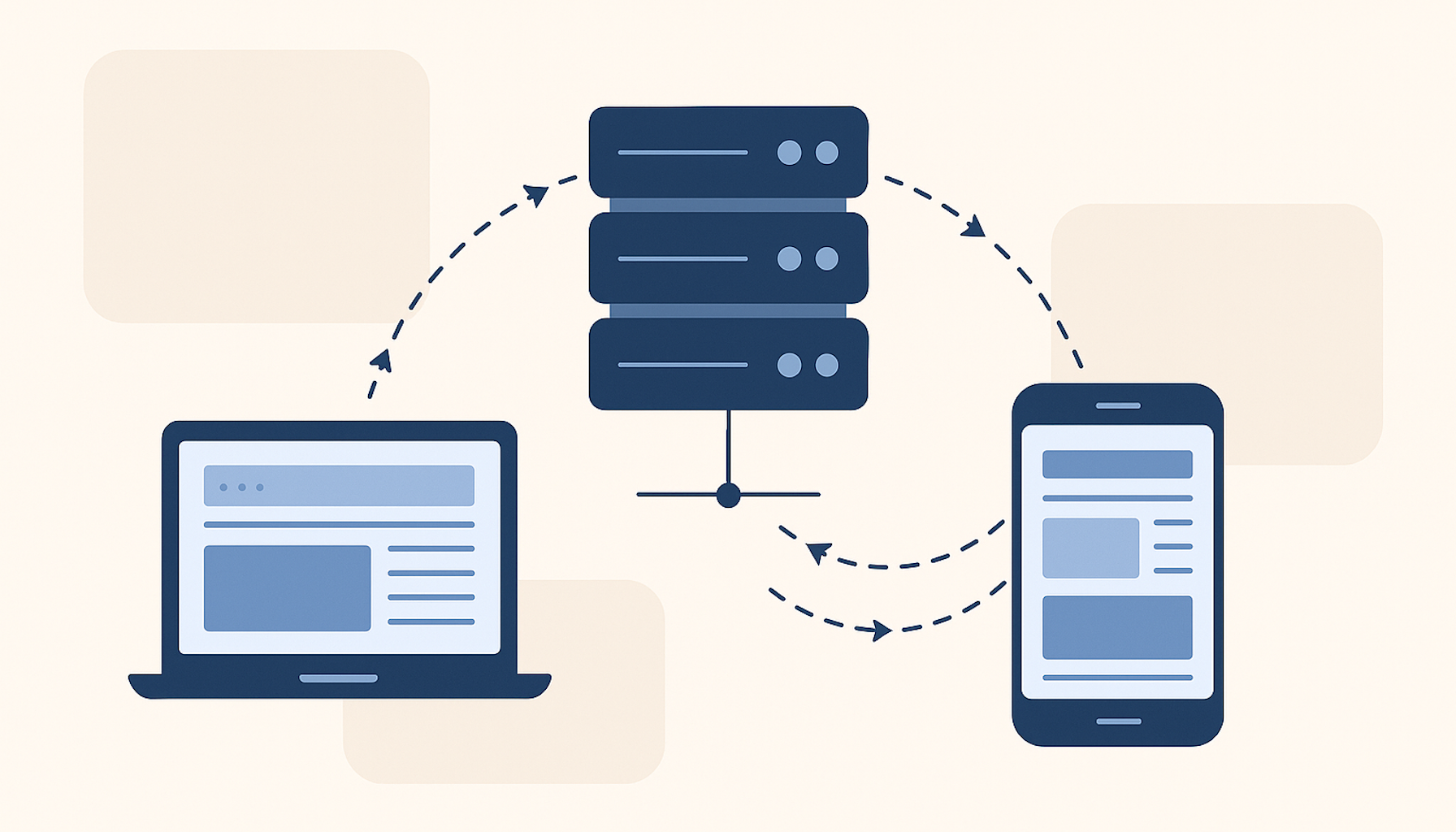
Prebid has become a popular industry standard for header bidding implementations. It gives publishers greater control and transparency over programmatic ad sales. Traditionally, digital ad auctions have taken place client-side, directly in the user’s browser. This setup has been easy to implement and has allowed efficient use of browser data. Still, its downsides include higher latency, larger page sizes, and limited control over who can access the data.
In the future, the focus is shifting toward server-side implementations. By moving the bidding process from the browser to a dedicated server, publishers can achieve better performance, greater scalability, and more privacy-friendly data control. Although the transition is already underway, it’s not always straightforward. Many publishers are considering how the three main approaches — client-side, server-side, and hybrid parallel bidding — differ in performance.
To explore these differences, we conducted a test in real publisher environments. The goal was to understand how each setup performs under similar conditions and to identify where server-side or hybrid approaches might offer measurable benefits.
How the Prebid Test Was Conducted
The test was designed to compare three Prebid configurations: client-side, server-side, and parallel bidding. A dedicated portion of the same traffic was directed to each configuration. The test covered both desktop and mobile web display environments.
The analysis focused on key performance metrics, including eCPM, revenue, fill rate, bid rate, viewability, general load times, and timed-out bids. The test was conducted, and all data were collected and analysed using Relevant Yield, an independent platform developed by Relevant Digital. The platform enables testing, managing, and analysing Prebid configurations and includes an integrated Prebid Server solution. Relevant Digital has extensive experience with server-side Prebid implementations, having actively carried them out since 2020 across web, mobile, and app environments.
What the Prebid Test's Results Showed
The results showed differences among the three Prebid implementations, though the gaps were smaller than in our previous test a few years ago.
Parallel and client-side setups performed almost on a par in terms of revenue and eCPM, but parallel bidding performed slightly better overall and maintained an advantage, particularly on desktop. Server-side was the fastest option across both environments, resulting in better load times and higher viewability, though it generated slightly lower revenue than client-side.
The results followed a similar pattern on mobile, but the differences between implementation types were minor. Parallel and client-side produced almost identical results in mobile environments, while server-side maintained its advantage in technical performance. We also observed differences at the SSP level; some partners performed differently depending on the implementation type, indicating that the varying behaviour of individual SSP partners also influences performance.
Conclusion: Building a Culture of Testing
While our test results suggested that parallel bidding currently performs slightly better overall, the optimal setup always depends on each publisher’s specific environment, configurations, and partners. The most effective approach is to test and fine-tune based on how different setups, SSPs, and ad placements perform in real-world conditions. In some cases, a server-side setup can provide clear advantages, while other environments may still benefit more from a client-side approach.
With Relevant Yield, publishers can test and compare different Prebid setups using a small portion of their traffic, measure the impact, and implement the configurations that perform best. It’s also possible to enable parallel bidding only for those SSP partners that see a clear boost from adding server-side connections. In the long term, building a culture of testing helps publishers gain a deeper understanding of their own environment, make data-driven decisions, and continuously find more efficient ways to improve yield without unnecessary complexity.
If you would like to learn more about the implementation and testing options for Prebid solutions, pleasedon't hesitate to contact us. We would be happy to provide further information.
